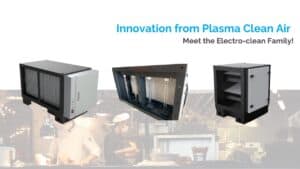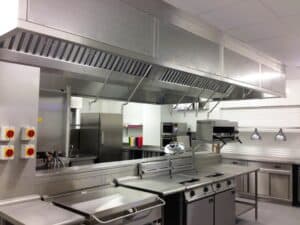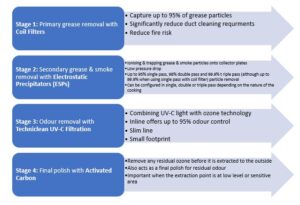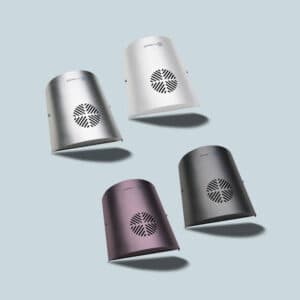Washrooms
Removing smells and odours from restaurant washrooms is important when trying to keep customer happy and thier experience memorable for the right reasons. All organisations provide washrooms and toilets whether for staff, visitors or customers. This is a natural place for odours to occur and addressed typically through masking or odour neutralising air fresheners. However, in environments such as hotels and restaurants it’s critical that washroom odours are fully contained. Masking often just creates sickly and artificial smells that could clash with food or taint customer opinion. More serious odour issues emanate from the washroom too, including poor drainage systems and airborne infections which require sophisticated odour management solutions that can kill bacteria.
TIP – Assess the quality of your washrooms as if you were the customer – is masking sufficient or do you need to consider stronger odour and infection control?
Waste
We all have to manage our waste responsibly, but for a range of businesses waste odours can leave a lingering side-effect. The food, farming and industrial sectors are particularly hard hit amongst others. Large scale waste odour problems could impact a wide area, such as a whole town. In the food sector they might spoil the ambience and popularity of a hotel or restaurant (beware those TripAdvisor reviews…) Prominent brands in the UK hotel industry have experienced foul food waste smells drifting into courtyards and other public areas, making them unusable until the problem is solved.
TIP – Consider where your waste storage is positioned in relation to local residents, rooms, heat and other facilities and how it could affect these areas.
Public waiting areas
If there’s one place in a business that everyone uses or passes through it’s the public or waiting areas, including retail shop floors, hotel lobbies, airport lounges and company reception areas. Whilst not an obvious source of odour problems the air quality is critical as first impressions count where visitors are concerned. It’s not simply about odours, although the high footfall (and sometimes what the feet bring with them) can introduce a range of bad smells. The other consideration is ambience, for which ‘freshness’ and avoiding stale air is critical.
TIP – A visitor survey may help you to ascertain the ambience and air quality of your public areas.
Which odour control solution is right for your business?
Choosing the correct odour control solution can be more complex than you would expect. The fact of the matter is that there is a broad range of solutions on the market and because they work in different ways they are not always easy to compare.
Traditionally, air fresheners and carbon filters have been used to control odours yet other technologies, such as ionisation, UV and ESPs are emerging as more efficient and cost effective alternatives. The traditional methods can seem less expensive initially but they are consumables so usually involve higher repeat costs than the more recent ‘permanent’ solutions.
Technologies like ionisation units, not only fully eliminate the odour but can also kill bacteria and improve the air’s freshness. The units can be installed directly onto the walls of problem areas such as waiting areas, easily slotted into duct work and are low powered and therefore low cost to run. The beauty of ionisation is that it involves a low initial outlay and no consumables, while being easy and inexpensive to maintain.
All businesses want the sweet smell of success. Don’t underestimate the power of an odour problem.








